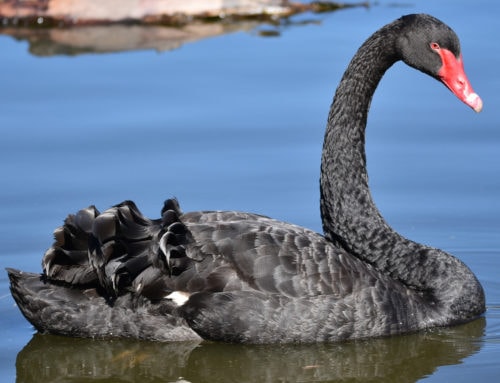vanlife/ van life: an on-the-road lifestyle choice for travelers who find living out of a van to be a carefree, affordable option for visiting sites around the country; first referenced in a 2011 social media hashtag.
*** TROVELOG ***
Weaving through the stars of endless continents, exploring off-grid forests, rejecting working for a wage. No doubt, living life on the road in a converted van feels pretty appealing.
And it seems a lot of people agree. The hashtag #Vanlife has featured in 3,180,386 Instagram posts at the time of publishing: the feed filled with sunsets, very good looking people and dreamy outstretched roads. So what is it like for the people who actually do it? HuffPost UK decided to find out.
Brighton natives Lauren, 28, and Craig, 34, have been travelling the world for ten years. They’ve bought and sold five camper vans along the way, backpacking the rest. For them, vanlife is an affordable way of exploring the globe and lends itself to a simple, economical lifestyle. But, Lauren feels the social media-fication of the lifestyle may jar with its beginnings.
. . .
New England-based sisters Starling, 22, and Rein, 20, supplement their vanlife experience by running a mobile vintage pop up shop out the back of their van. They drive around, changing state each week and selling vintage clothes to fund their travels.“We have had our bus for 10 years,” says Starling. “It was broken down in a blueberry field in Maine for about 40 years and when we happened upon it and inquired about it, the owner sold it to us for $50.”
In keeping with the respectful mantra of the vanlife movement, Lauren insists it is really easily to live sustainably.
See article at: Charley Ross, “#Vanlife: Why I Left The 9-5 Behind To Travel The World Full Time,” Huffington Post (UK), June 12, 2018
◄TrovelogTrovelogTrovelogTrovelogTrovelogTrovelogTrovelog►
The latest luxury getaway: a van trip.
Attracted by Instagram images of a free-spirited, simpler way to travel, older consumers are turning to vans for their trips, while adding the high-end spin they can afford. Forget the beat-up Volkswagen bus: These travelers are shelling out for custom-fitted Mercedes-Benz or Ram ProMaster vans for their life on the road.
. . .
The van life—or #vanlife—phenomenon began on social media several years ago with photos of twentysomethings peering out at beach and mountain vistas from vans decorated with flowing drapes and colorful quilts. The images took off on the internet and caught the attention of older consumers who not only can afford luxury setups, but are also at a point in life when they can take extended, if not permanent, time off.See article at: Anne Marie Chaker, “Boomers Embrace Luxury Van Life,” The Wall Street Journal,” April 21, 2018
◄TrovelogTrovelogTrovelogTrovelogTrovelogTrovelogTrovelog►
[In 2011, Foster Huntington] had given up his apartment in New York and his job as a designer at Ralph Lauren, and moved into a 1987 Volkswagen Syncro. He spent his days surfing, exploring, and taking pictures of his van parked in picturesque locations along the California coast. It was the early days of Instagram, and, over time, Huntington accumulated more than a million followers. He represented a new kind of social-media celebrity, someone famous not for starring in movies or recording hit songs but for documenting an enviable life. “My inspiration,” went a typical comment on one of his posts. “God I wish my life was that free and easy and amazing.” Huntington tagged his posts with phrases like #homeiswhereyouparkit and #livesimply, but the tag he used most often was #vanlife.
. . .
Huntington’s vanlife hashtag was a joking reference to Tupac’s “thug life” tattoo. “You know, it’s not thug life—it’s van life!” he told me. Six years later, more than 1.2 million Instagram posts have been tagged #vanlife. In 2013, Huntington used Kickstarter to fund “Home Is Where You Park It,” a sixty-five-dollar book of his vanlife photographs, which is now in its fourth printing. In October, Black Dog & Leventhal will publish his second book on the topic, “Van Life.”Scroll through the images tagged #vanlife on Instagram and you’ll see plenty of photos that don’t have much to do with vehicles: starry skies, campfires, women in leggings doing yoga by the ocean. Like the best marketing terms, “vanlife” is both highly specific and expansive. It’s a one-word life-style signifier that has come to evoke a number of contemporary trends: a renewed interest in the American road trip, a culture of hippie-inflected outdoorsiness, and a life free from the tyranny of a nine-to-five office job.
Vanlife is an aesthetic and a mentality and, people kept telling me, a “movement.” S. Lucas Valdes, the owner of the California-based company GoWesty, a prominent seller of Volkswagen-van parts, compared vanlife today to surfing a couple of decades ago. “So many people identify with the culture, the attire, the mind-set of surfers, but probably only about ten per cent of them surf,” he said. “That’s what we’re trying to tap into.”
. . .
Some vanlifers drive shiny new Mercedes Sprinter vans or practical Ford Econolines, but the quintessential van is the Volkswagen Vanagon, beloved for its bulky, unaerodynamic shape. “It’s the Swiss Army knife of the R.V. world,” Smith explained. “And the community is great. And it was going to look great in the photos.” That winter, while living in New England, he and King bought a cream-colored 1987 Vanagon Camper from a woman in upstate New York for thirty-five hundred dollars. The van was sturdy and full of personality; it had a rusty undercarriage and was wired with an external P.A. system that made animal sounds. They called it Boscha, because it sounded like the name of a German grandmother.See article at: Rachel Monroe, “#Vanlife, the Bohemian Social-Media Movement,” The New Yorker, April 24, 2017
◄ TrovelogTrovelogTrovelogTrovelogTrovelogTrovelogTrovelog►
See related Trovelog posts: glamping <>






